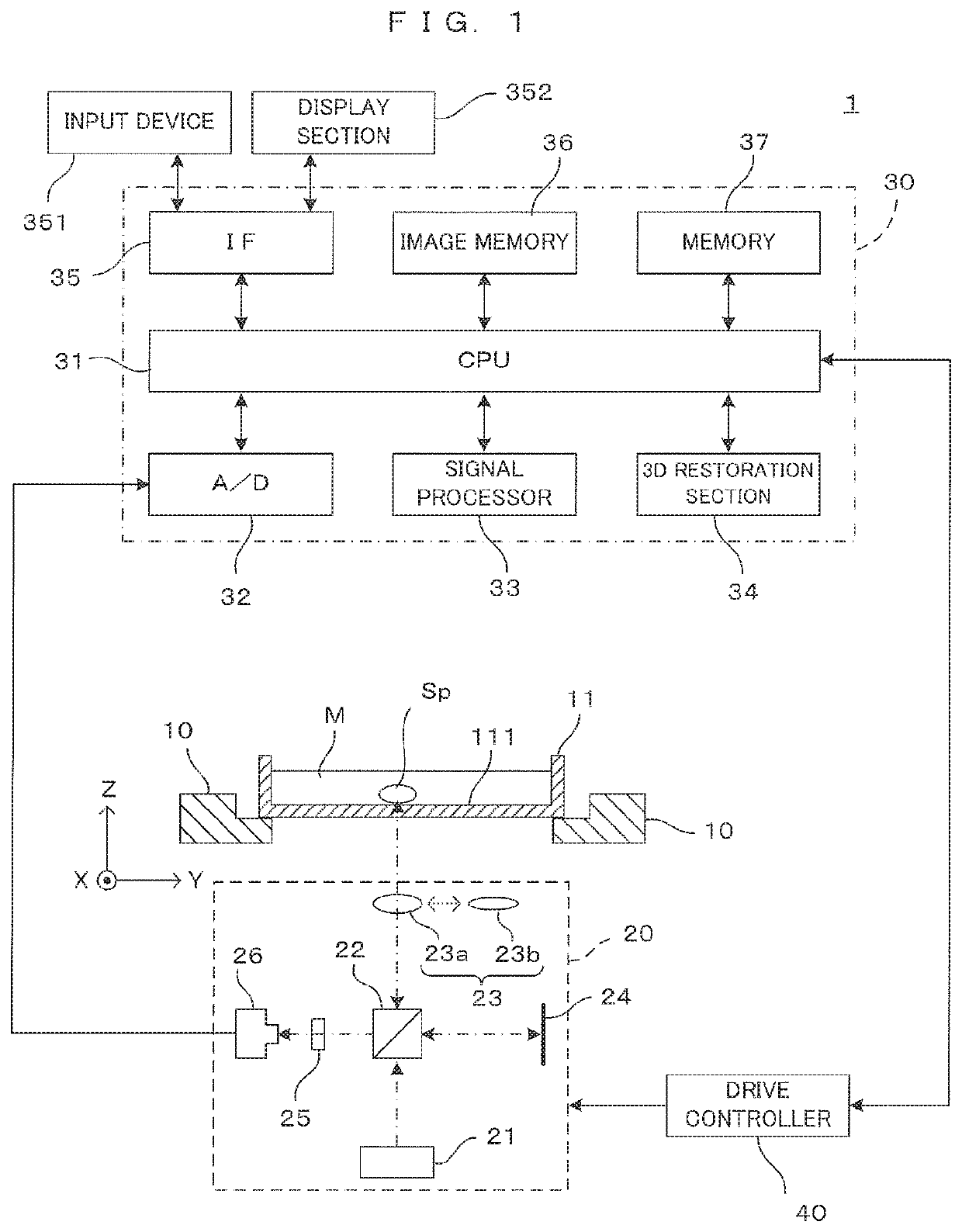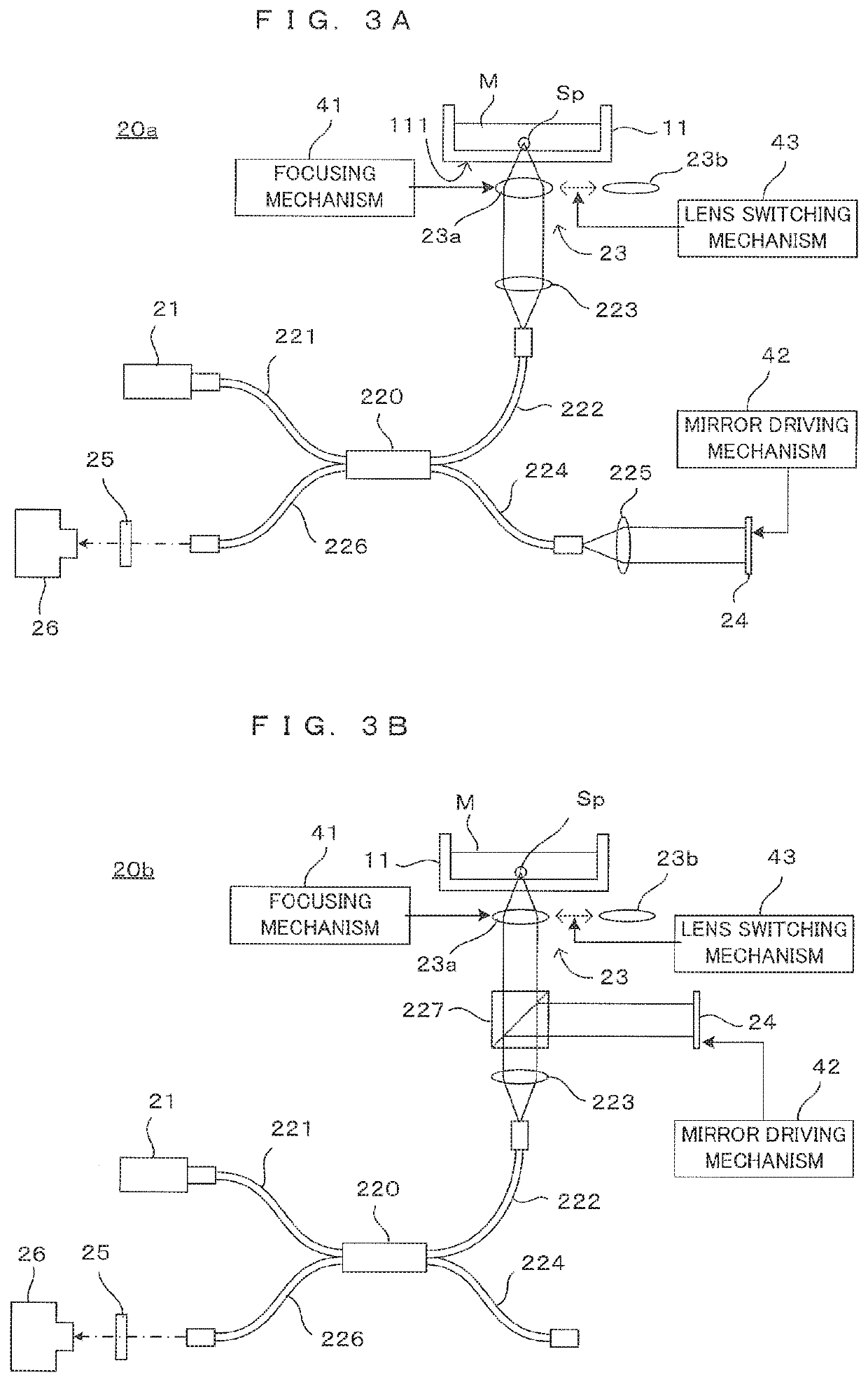Optical coherence tomographic apparatus and optical coherence tomographic method
a tomographic apparatus and optical coherence technology, applied in the field of tomographic techniques, can solve problems such as image noise, and achieve the effect of optimal balan
- Summary
- Abstract
- Description
- Claims
- Application Information
AI Technical Summary
Benefits of technology
Problems solved by technology
Method used
Image
Examples
Embodiment Construction
[0034]FIG. 1 is a drawing showing an embodiment of an imaging apparatus according to the present invention. The imaging apparatus 1 tomographically images a cell cultured in a culture medium M, a spheroid (cell aggregate) which consists of many cells, an organ-like structure (hereinafter, referred to as a “cell or the like” generically) as an imaging object, processes the obtained tomographic image and generates a stereoscopic image of the imaging object. Note that although an example of imaging a spheroid in the culture medium as the imaging object is illustrated here, the imaging object is not limited to this. For unified presentation of the directions in drawings, the XYZ orthogonal coordinate axes are established as shown in FIG. 1. The XY plane is a horizontal surface. The Z axis represents the vertical axis, in more detail, the (−Z) direction represents the vertically downward direction.
[0035]The imaging apparatus 1 comprises a holder 10. The holder 10 holds in an approximatel...
PUM
| Property | Measurement | Unit |
|---|---|---|
| wavelength range | aaaaa | aaaaa |
| optical coherence tomographic apparatus | aaaaa | aaaaa |
| spectrum | aaaaa | aaaaa |
Abstract
Description
Claims
Application Information
 Login to View More
Login to View More - R&D
- Intellectual Property
- Life Sciences
- Materials
- Tech Scout
- Unparalleled Data Quality
- Higher Quality Content
- 60% Fewer Hallucinations
Browse by: Latest US Patents, China's latest patents, Technical Efficacy Thesaurus, Application Domain, Technology Topic, Popular Technical Reports.
© 2025 PatSnap. All rights reserved.Legal|Privacy policy|Modern Slavery Act Transparency Statement|Sitemap|About US| Contact US: help@patsnap.com



